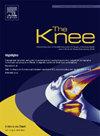在2年随访中,外侧和内侧单腔关节置换术的可比结果
IF 1.6
4区 医学
Q3 ORTHOPEDICS
引用次数: 0
摘要
本研究旨在评估(1)相对于内侧单室膝关节置换术(UKA)的全国发生率,并比较(2)匹配的外侧和内侧单室膝关节置换术(UKA)队列中90天的医疗并发症和(3)1年和2年的手术并发症。方法查询PearlDiver Mariner数据库中2016 - 2022年间发生原发性UKA的患者。使用ICD-10程序代码将患者分为外侧和内侧室队列。排除双腔室- uka患者。根据年龄、性别、Elixhauser合并症指数(ECI)以及以下合并症:糖尿病、吸烟和肥胖,将侧侧UKA患者与内侧UKA队列进行1:4匹配。采用多因素logistic回归比较术后90天的内科并发症和术后1年和2年的外科并发症。结果在研究期间,内侧UKAs与外侧UKAs的比例为14.17比1。侧位UKA患者术后90天急性假体周围关节感染(PJI)发生率较高(OR: 3.919, 95% CI: 1.075-14.283;p = 0.033)。然而,其余的医疗结果没有发现差异。PJI的修订无差异(OR: 2.071, 95% CI: 0.764-5.162;p = 0.192)或全因修正率(or: 1.956, 95% CI: 0.973-3.768;P = 0.050)。尽管侧边UKA患者的急性术后PJI发生率较高,但目前的分析表明,我们的研究队列之间的结果在很大程度上是相似的。这些发现有助于成人重建外科医生在适当选择孤立性膝外侧骨关节炎患者时考虑外侧单室关节置换术。本文章由计算机程序翻译,如有差异,请以英文原文为准。
Comparable outcomes between lateral and medial unicompartmental arthroplasty at 2-year follow-up
Introduction
Our study sought to evaluate (1) national rates of lateral unicompartmental knee arthroplasty (UKA) relative to medial UKA and compare, (2) 90-day medical complications and (3) 1- and 2-year surgical complications between matched lateral and medial UKA cohorts.
Methods
The PearlDiver Mariner database was queried for patients undergoing primary UKA between 2016 and 2022. ICD-10 procedure codes were utilized to segregate patients into lateral and medial compartment cohorts. Patients undergoing bicompartmental-UKA were excluded. Lateral UKA patients were matched 1:4 to the medial UKA cohort based on age, sex, Elixhauser Comorbidity Index (ECI), and the following comorbidities: diabetes, tobacco use, and obesity. Medical complications at 90-days and surgical complications at 1- and 2-years post-operatively were compared utilizing multivariate logistic regression.
Results
Over the study period, medial UKAs were performed at a 14.17 to 1 ratio compared to lateral UKAs. Lateral UKA patients demonstrated a higher incidence of acute periprosthetic joint infection (PJI) at 90-days post-operatively (OR: 3.919, 95% CI: 1.075–14.283; p = 0.033). However, no differences were seen for the remaining medical outcomes. There were no differences in revision for PJI (OR: 2.071, 95% CI: 0.764–5.162; p = 0.192) or in all-cause revision rates (OR: 1.956, 95% CI: 0.973–3.768; p = 0.050) at 2-years.
Discussion
Although there was a higher rate of PJI in the acute post-operative setting for patients undergoing lateral UKA, the present analysis demonstrates largely comparable outcomes between our studied cohorts. These findings serve to inform adult reconstruction surgeons considering lateral unicompartmental arthroplasty in appropriately selected patients with isolated lateral compartment osteoarthritis of the knee.
求助全文
通过发布文献求助,成功后即可免费获取论文全文。
去求助
来源期刊

Knee
医学-外科
CiteScore
3.80
自引率
5.30%
发文量
171
审稿时长
6 months
期刊介绍:
The Knee is an international journal publishing studies on the clinical treatment and fundamental biomechanical characteristics of this joint. The aim of the journal is to provide a vehicle relevant to surgeons, biomedical engineers, imaging specialists, materials scientists, rehabilitation personnel and all those with an interest in the knee.
The topics covered include, but are not limited to:
• Anatomy, physiology, morphology and biochemistry;
• Biomechanical studies;
• Advances in the development of prosthetic, orthotic and augmentation devices;
• Imaging and diagnostic techniques;
• Pathology;
• Trauma;
• Surgery;
• Rehabilitation.
 求助内容:
求助内容: 应助结果提醒方式:
应助结果提醒方式:


